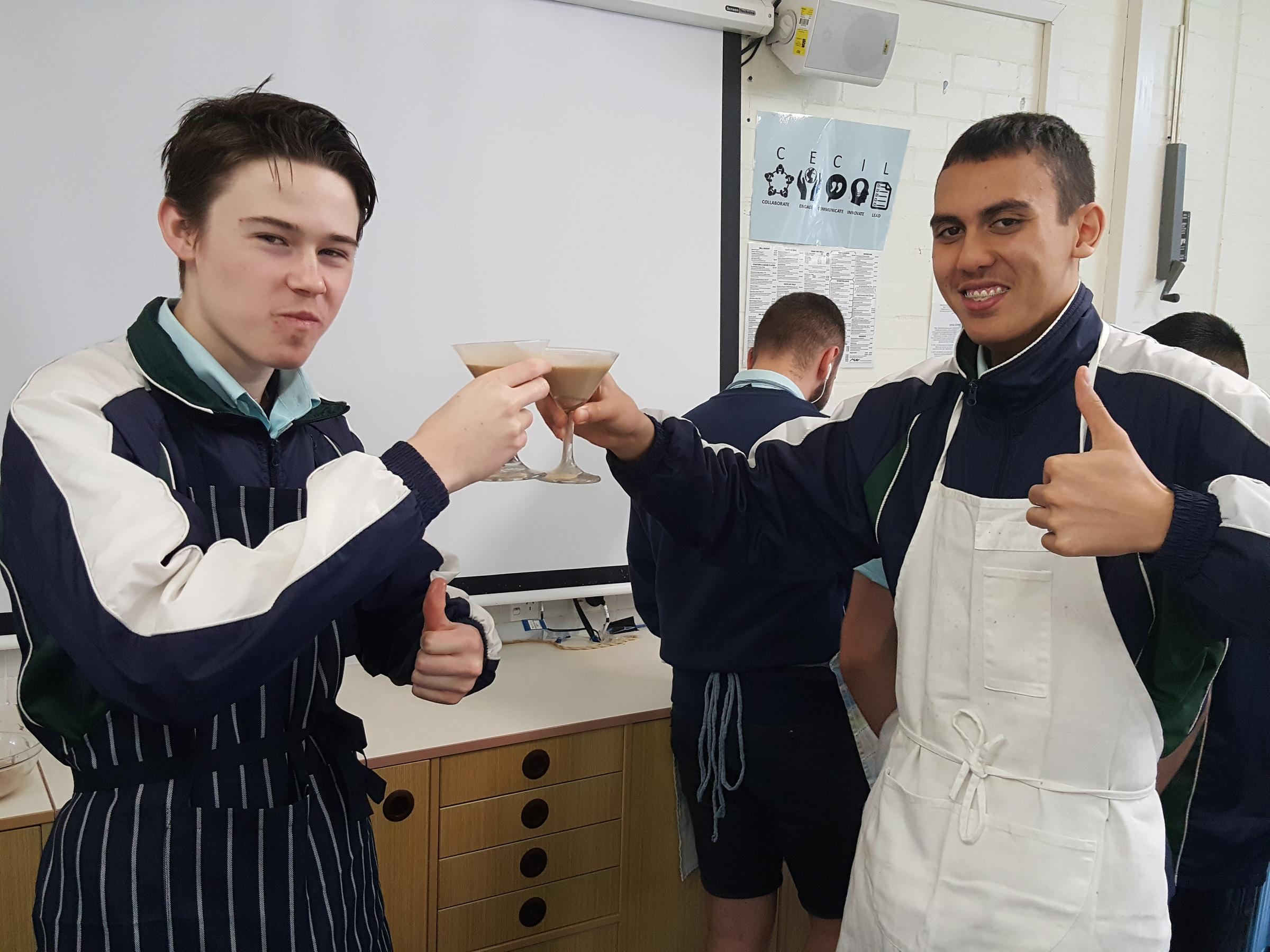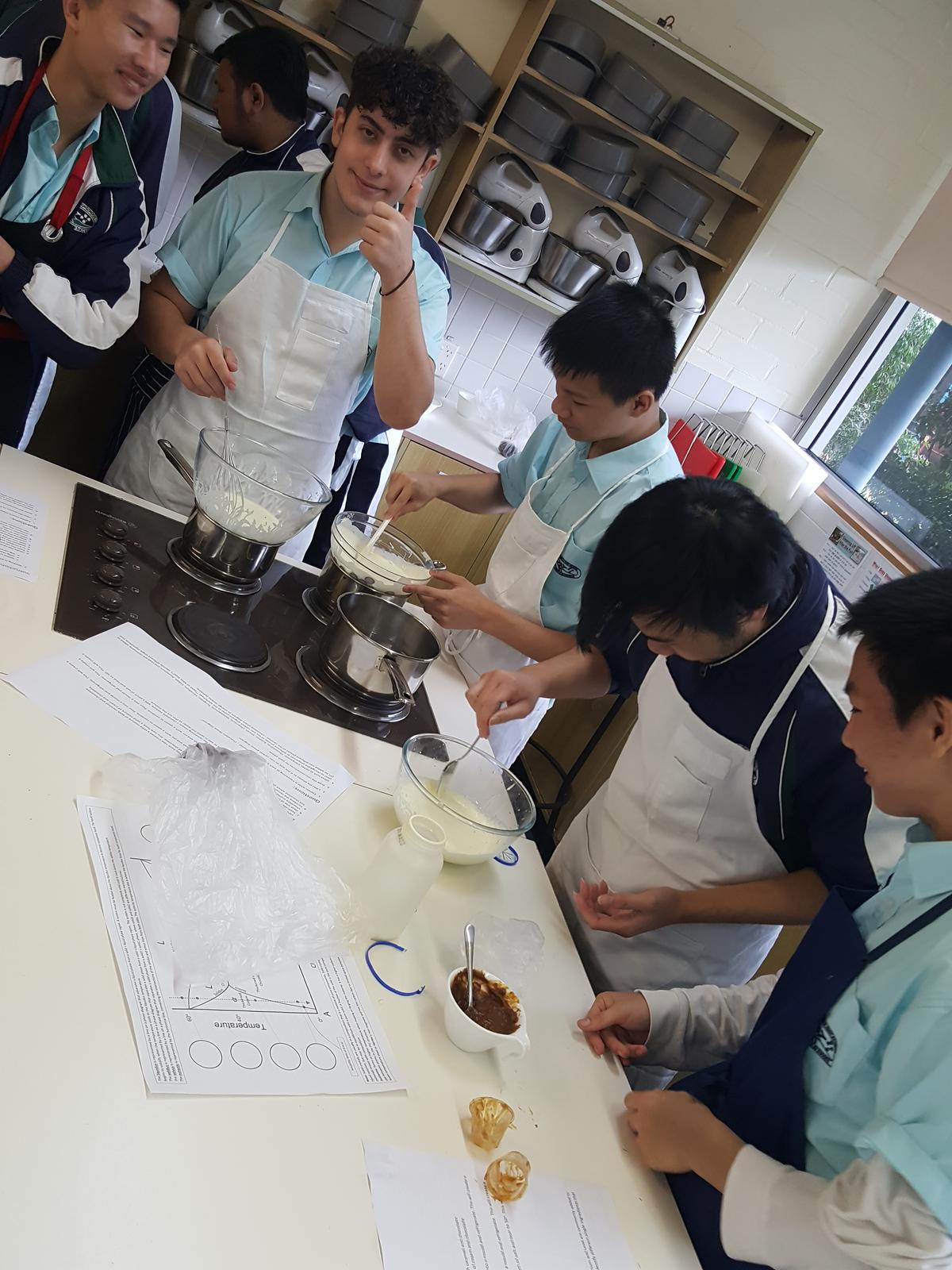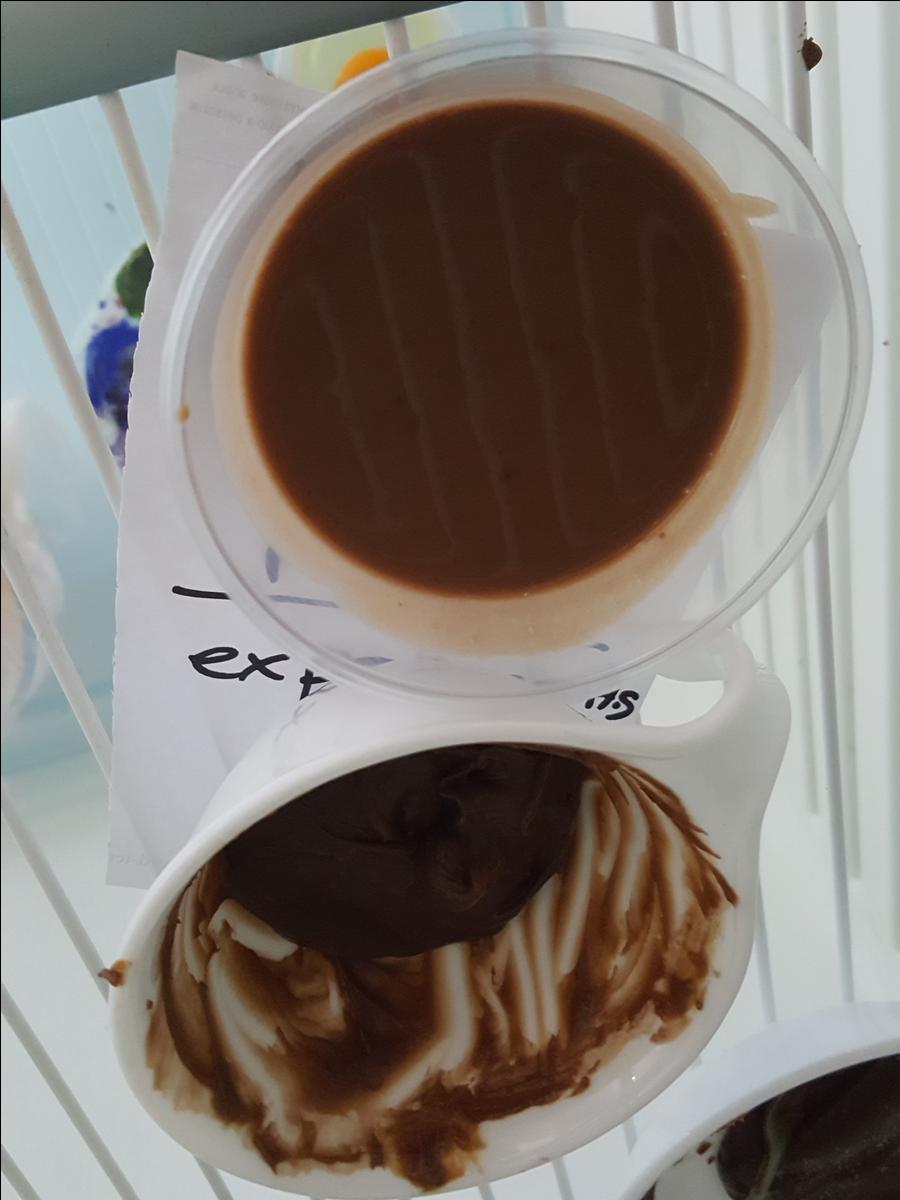A sweet experiment for Engineering students

Year 11 Engineering
Many materials are mixtures, even if they only have a trace of impurity. But some materials are deliberately made as mixtures, to improve the properties. Steel is one example of this, which Year 11 and 12 Engineering study in depth as part of their material analysis. The mixtures or alloys are represented in phase diagrams which are graphs representing the mixed materials in equilibrium. A materials engineer will first look at the phase diagram as it shows the materials structure through the different percentages of each material and the affects at different temperatures that make it in equilibrium, alter the materials microstructure and ultimately determine the materials properties. The alloying material properties can be predicted through each phase to determine its suitability for use in an application.
Students in Ms Erickson’s Year 11 Engineering class experimented with chocolate, caramel and cream to recreate the varying microstructural compositions found in the iron-carbon phase diagram (steel).
Students made a hot chocolate as the final heated product (0.8% carbon steel heated above 720 degrees to form molten steel) but also three further products as a result the percentage of ingredients into the mixtures.
They got to make and try caramel chocolate truffles (using a mixture of cream, caramel and chocolate), salted caramel flavoured chocolate (using a mixture of salt, caramel and chocolate), as well as chocolate mousse (using melted chocolate and whipped cream) – Essentially, the chocolate mousse resulted in similar properties to ferrite and austenite in the steel structure (0.4 - 0.6% Carbon steel - heated above 720 Degrees and cooled), whereas the caramel chocolate being cementite and austenite (1.2% Carbon steel - heated above 720 Degrees and cooled) .
Chocolate was the perfect ingredient to use in this experiment as chocolate is a six-phase polymorphic crystal, meaning that when it's melted it can recrystallize six different ways creating six different types of chocolate – very similar to carbon when heated at varying temperatures the metallurgist can manipulate the final product.
Ms J Erickson
Year 11 Engineering teacher


